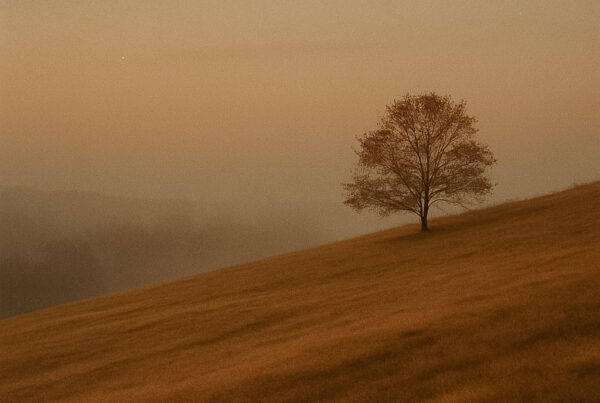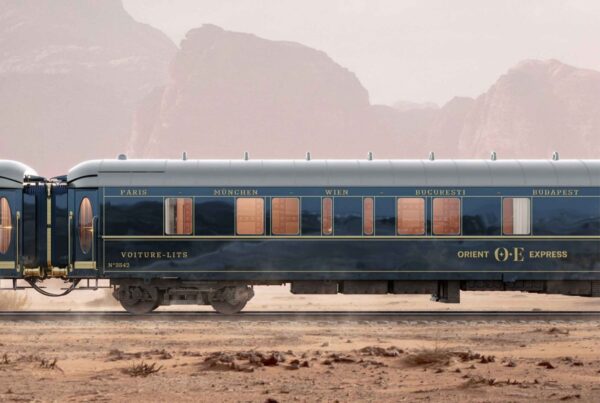Words and Photographs by Samuel Christian
We arrived with the night, driving the van among looming shadows wrapped in scarves of cloud. Soon there was nothing but darkness. And it was in the darkness that we drove the pass up to our first spot for the night; parking the van among some rather tall trees lit by the warm glow of hotel windows.
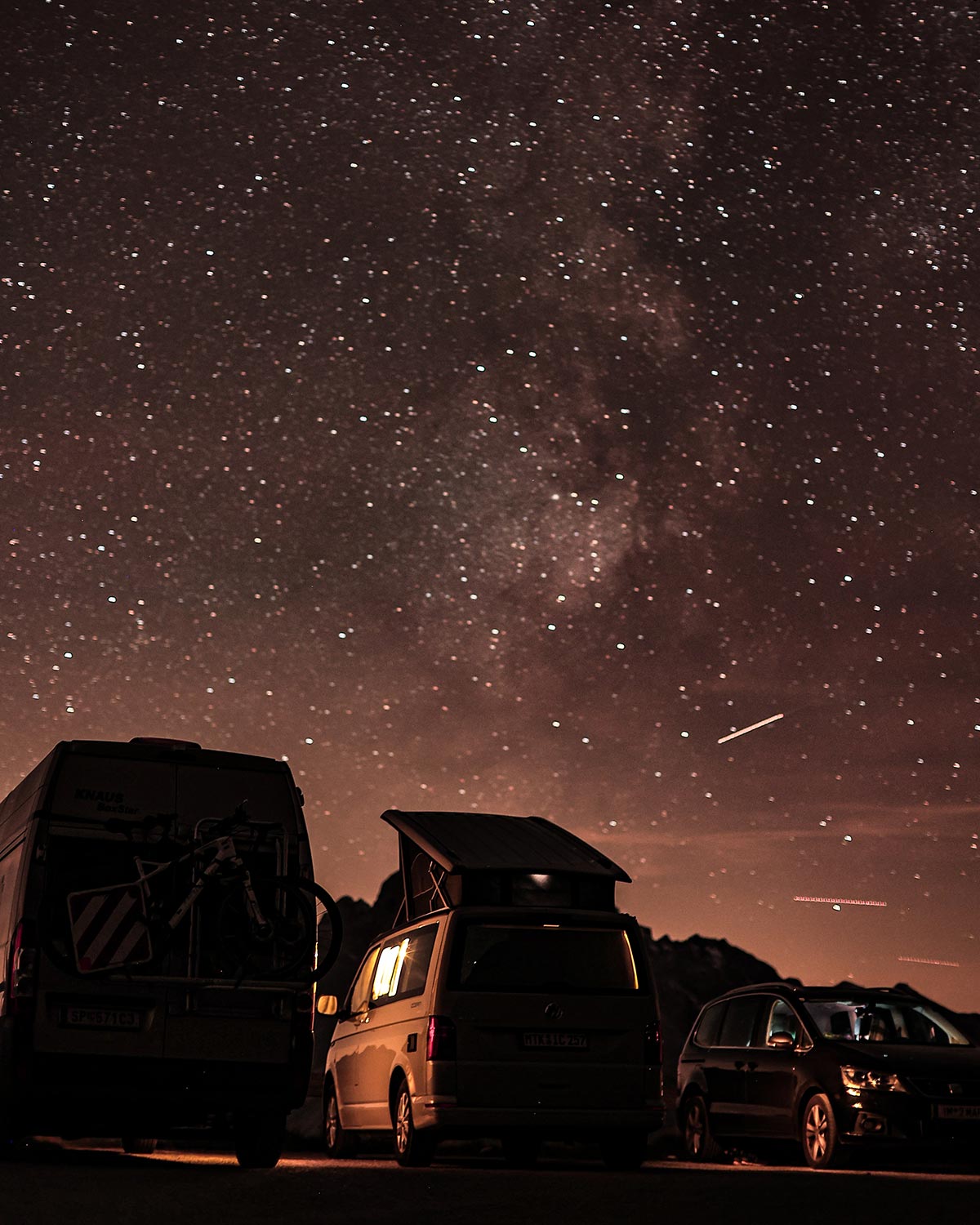
That arrival after nightfall meant that as I was woken by the cold of dawn, I looked up from my bed to see quite the spectacle. Framed in an unzipped semi-circle window left open by my friend Jack was a small piece of that famous rock, the Dolomiti. More than that, it was lit by a gorgeous sunrise painting the rock face in a strong pink. A beautiful dichotomy: the light comes quickly and shoots out in rays all too brief that stare at these rock faces formed over millions of years. It is the rock that creates the iconic enrosadira, this alpenglow. It’s hard to believe that this land of towering peaks was once a warm, rather calm tropical sea whose coral reefs are what form the Dolomiti material. 30 million years ago the collision of tectonic plates was followed by years of sculpting by earthquakes, volcanic eruptions, wind, ice, and rain. I can’t help but fall into some romantic philosophising that beauty needs both the quick and the slow, the long-formed and the brief spectacular.
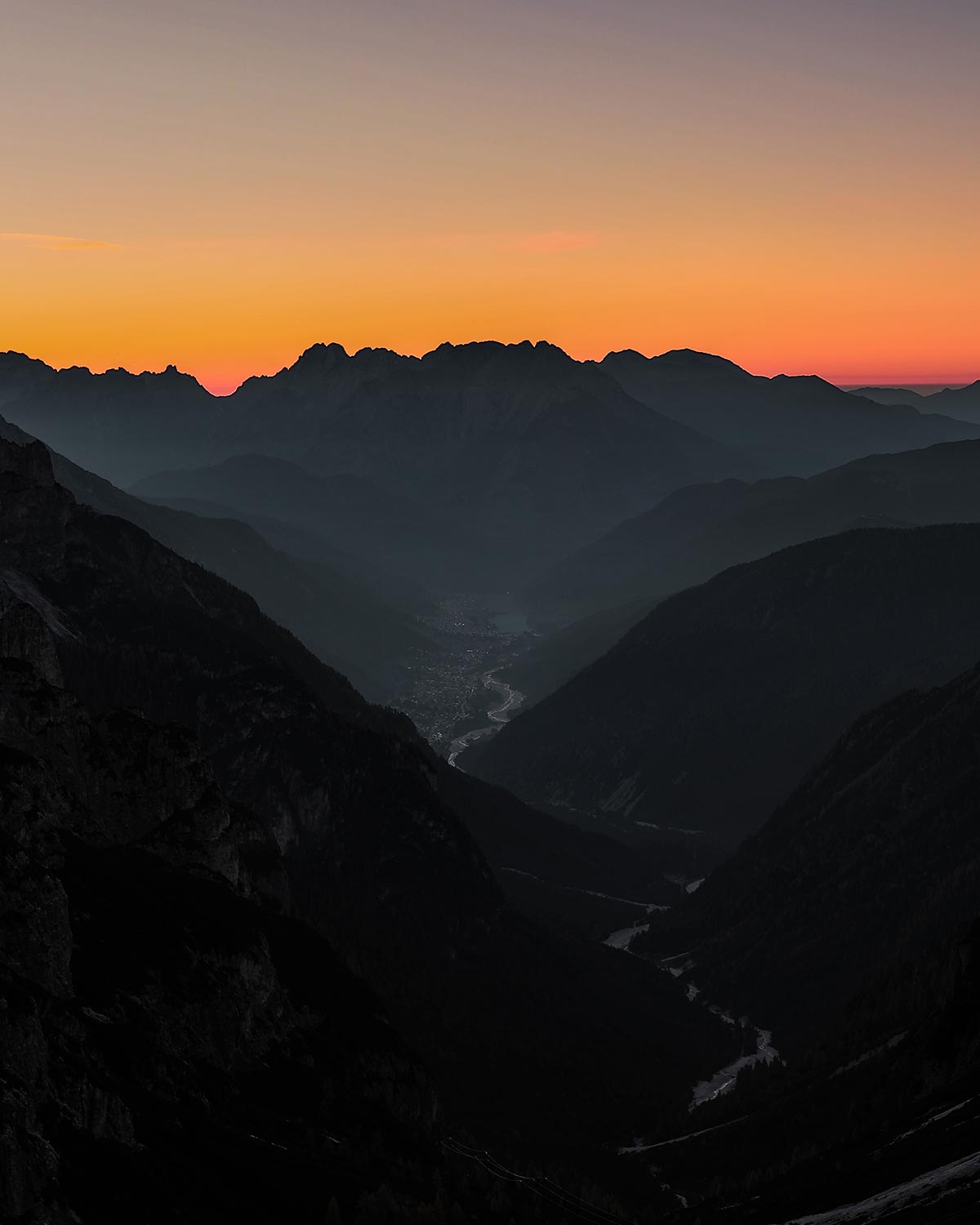
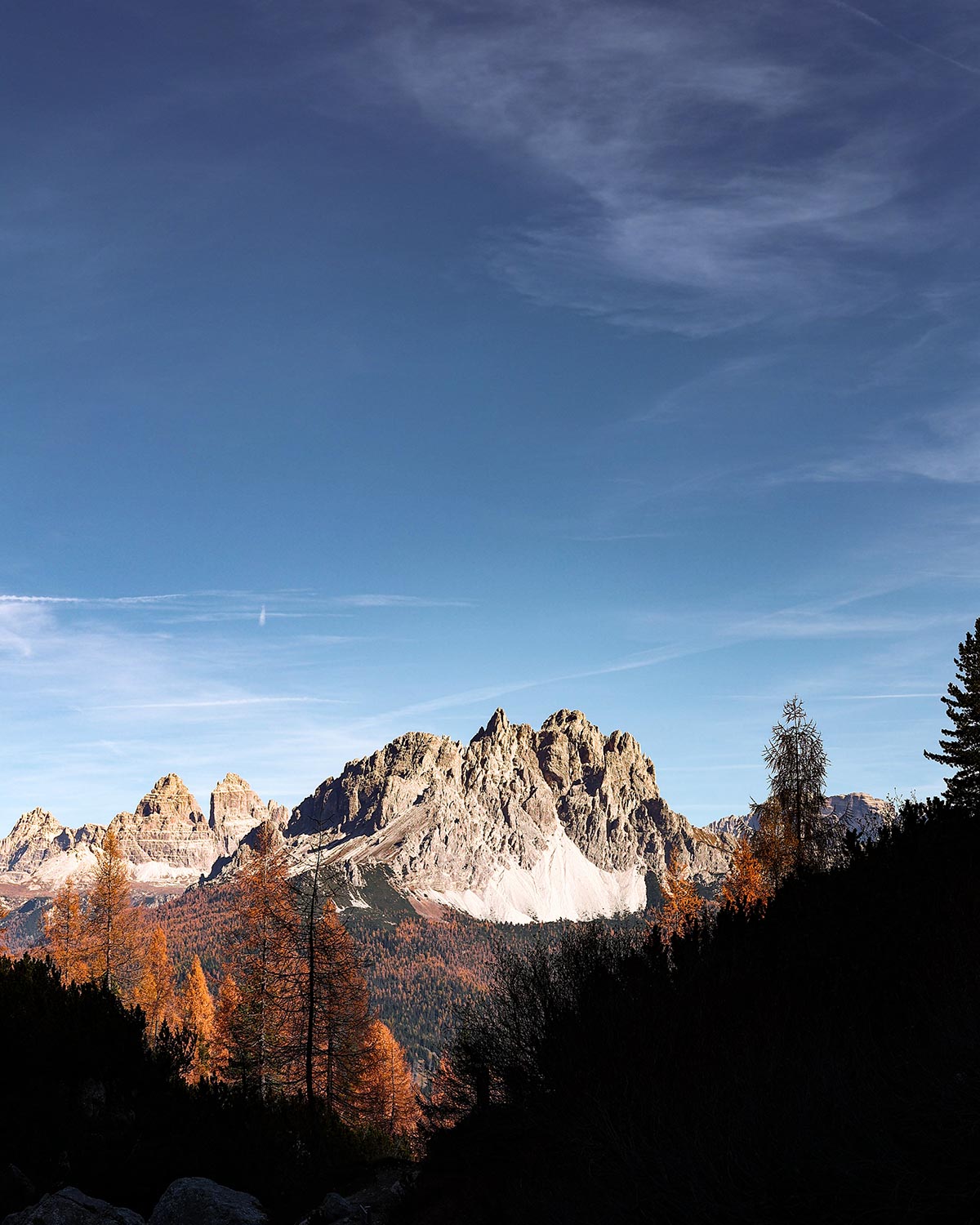
It’s in moments like these that you understand why the Romantics came to these kinds of places. It throws out inspiration like a sower does seed. The Dolomites have many practical purposes. They are a source of income through tourism, a thrill ride in winter and grazing for cattle in spring. For me though, it’s been a space for awe and finding refreshment in that. With all the very important and much-needed talk about the climate crisis and the threat to nature, we can very easily forget to simply go out and enjoy it. Most of us now know why we should protect our wild places, but how often do we spend time with them and really know them?
This trip was one where I could do just that. The drama and scale of the landscape is one that really forces that kind of reaction upon you. Everywhere I looked was something beautiful. Taken out of the everyday, travel makes me more observant. The light, the landscape but also the smell of the forests and the sounds of wildlife. One night, stepping out of our van in the dark, I heard the deer rustling and then running nearby. Never saw them, but that sound remains with me in a way that it wouldn’t have with a clear sighting. When it comes to wildlife watching – there, it’s even in the name we give it – our focus is usually on if we have seen something. But hearing and by extension smelling and feeling something wild is an equally as valuable experience. In there, I heard many small birds: the chorus of their songs connected to the forested slopes. If these were the voices of humans, we would call it art.
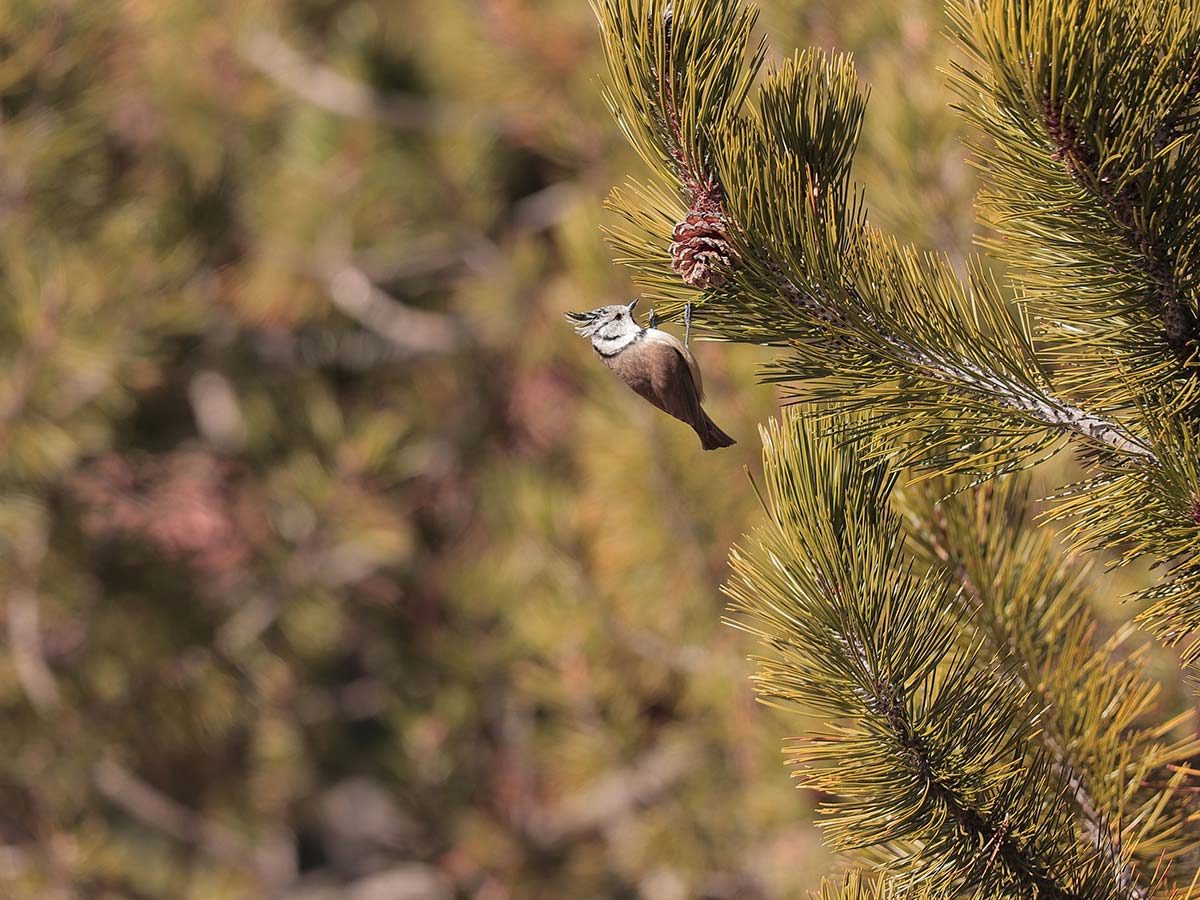
I was thrilled to see a crested tit. They are one of those species that I have dreamed of seeing since I was young and read about them inhabiting parts of Scotland. Back then though I would never have imagined that my first sighting would be in the Alps. While the grandeur of the mountains was magnificent, it was that tiny bird that would become my highlight of the trip. The years of anticipation and imagining added up to make that moment when I saw it fluttering away from a tree memorable. It is often that way. We might set off travelling to see something new and experience something different, but we do bring our own memories, dreams and feelings to a place. That is no bad thing.
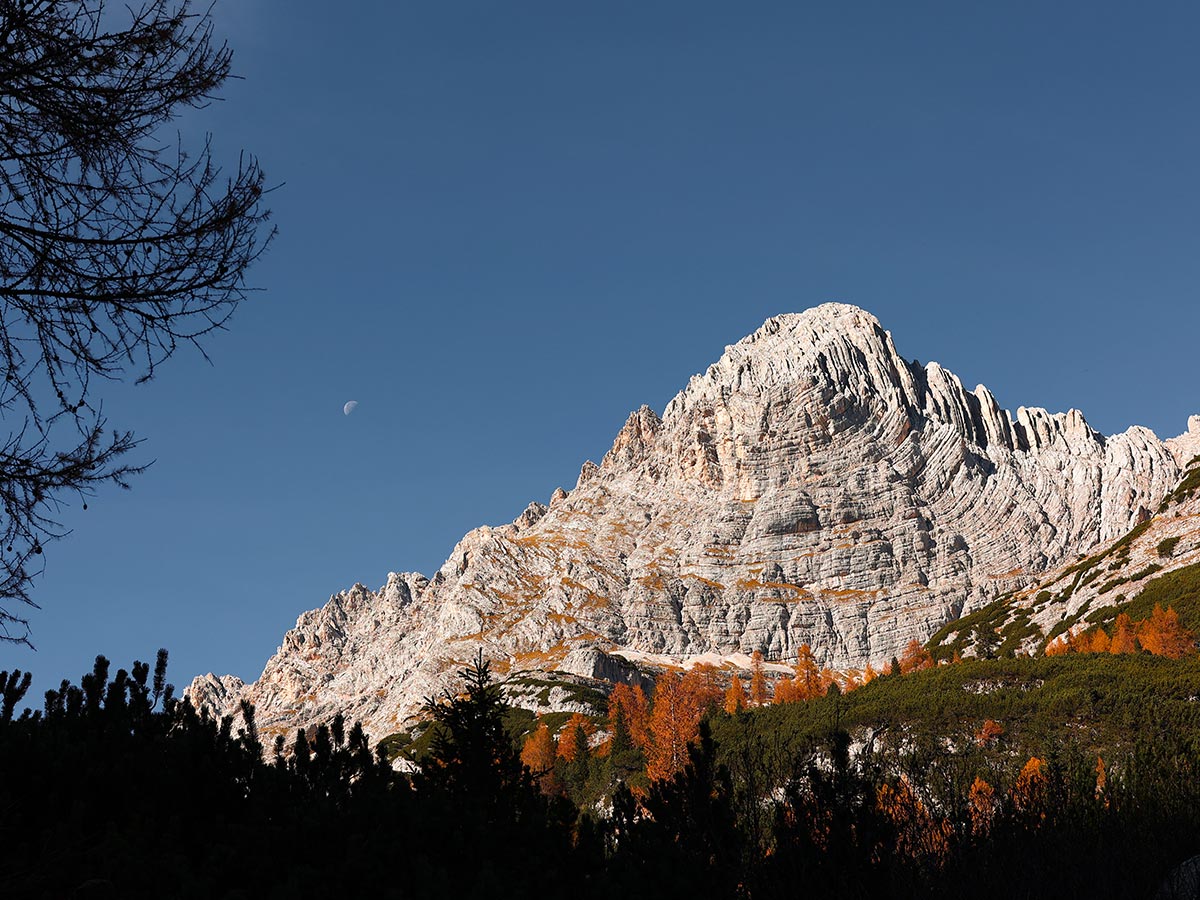
The pale mountains are dramatic and unique pieces of natural design. But the chalets and hotels throughout the region are also iconic. Embracing colour and symmetry they make a stark contrast from the ragged mono-peaks. But their colour is at least embraced in the trees set on fire by the autumn. While they are the highlight at this time of year, like any great piece of art, they are complimented by the peaks, the lakes and the wide skies home to the sun’s light to be complete.
And this really was art. It was said of the UK’s Lake District that it should be preserved as a ‘national gallery of natural pictures’. I’m grateful to those who have done just that in the Dolomites. We might compare it to contemporary art’s creations of immersive experiences. As fun and exciting as they are, let us not forget that the natural world has always been an immersive art experience. The Dolomites are certainly one of these: rich in colour and texture. They are of a grand scale, but this is made up of a thousand details such as the changing colours of the trees’ needles and the chirps of bird song. It is a place of longevity and change: a design of nature.

